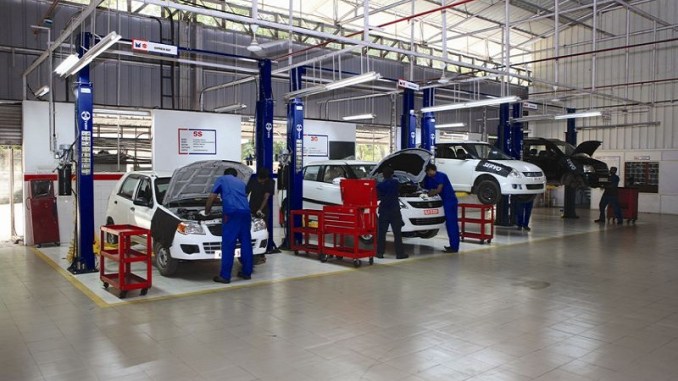All Categories
Featured

[/image]
Correct tire upkeep is crucial to prolonging the life of your vehicle and ensuring a smooth and risk-free driving experience. 2 of one of the most crucial tire solutions are tire rotation and positioning. These solutions not just protect against premature tire wear yet also boost handling, gas efficiency, and overall safety. If you're strange with what tire rotation and alignment require, here's an extensive check out why they matter and exactly how they benefit your vehicle.
What Is Tire Rotation? Tire rotation refers to relocating your tires from one placement to another to ensure they wear equally. The factor tire rotation is needed is because not all tires use the same method. In front-wheel-drive automobiles, as an example, the front tires take care of both guiding and power, which makes them put on out faster than the rear tires. The rear tires wear differently in rear-wheel-drive and all-wheel-drive vehicles.
By turning your tires regularly, you can cancel the wear across all 4 tires. This aids them last much longer and enables more even grip, improving handling and security. The majority of manufacturers recommend rotating your tires every 6,000 to 8,000 miles or according to the car's handbook.
What Is Tire Placement? Tire alignment, also called wheel alignment, refers to the procedure of changing the angles of your cars and truck's wheels to meet the supplier's requirements. The goal of placement is to make sure that all 4 tires are aiming in the appropriate direction and at the proper angles, which enables optimal handling, safety, and tire life.
There are 3 major positioning angles that are changed during a positioning check:
Camber: The tilt of the wheels when viewed from the front. If the camber is off, it can result in unequal tire wear, as the tire will certainly not make complete call with the roadway surface. Caster: The angle of the guiding axis when seen from the side. Appropriate caster positioning makes sure that your lorry is steady when driving straight and that your guiding wheel go back to its regular placement after a turn. Toe: The angle at which the tires point inward or outward when seen from above. Incorrect toe positioning can cause the tires to drag, causing uneven wear and decreased gas performance. Misalignment can take place with time as a result of normal driving or from hitting barriers like aesthetics or pits. If your alignment is off, it's important to obtain it checked and remedied to prevent issues down the road.
Why Tire Turning and Positioning Issue. Raised Tire Life:. Regular tire turning makes certain also tire wear, assisting you obtain one of the most gas mileage out of your tires. Uneven wear can create you to replace tires prematurely, which can be pricey. When your tires use uniformly, they last longer, conserving you money in the long term.
Improved Car Handling:. Appropriate positioning keeps your lorry driving straight and secure, particularly at greater rates. Imbalance can create your automobile to draw to one side, making it more challenging to guide. By keeping your tires aligned, you ensure your lorry manages extra efficiently and naturally.
Improved Security:. Tires that are not revolved or lined up effectively can use erratically, influencing just how well your lorry stops and corners. For example, misaligned tires or tires with unequal wear patterns might trigger minimized grip, especially in wet or icy conditions, causing a higher threat of crashes.
Better Gas Effectiveness:. Tires that are misaligned can create rolling resistance, indicating your engine has to function harder to relocate the automobile. This boosts fuel usage and minimizes your automobile's gas effectiveness. Proper tire positioning decreases rolling resistance, which can enhance gas mileage.
Signs Your Tires Need Rotation or Placement. While it's vital to stay on top of routine tire rotations and placements, there are a few indicators that might show your tires need interest:
Unequal Use: If you observe that a person tire is a lot more worn than the others, it's likely time for a turning. Steering Pull: If your car draws to one side or feels off-center, it could be an indication of misalignment. Resonances: If you really feel resonances in the steering wheel or the auto, maybe as a result of an alignment issue. Noisy Tires: Squealing or loud tires can show inappropriate rotation or imbalance. If you see any of these indicators, it is essential to get your tires examined by a professional.
Exactly How Often Should You Turn and Align Your Tires? Tire turning must typically be done every 6,000 to 8,000 miles, though this can vary based on your driving problems and the kind of car you drive. It's additionally an excellent idea to have your tires turned whenever you get an oil change.
For positioning, you must have your tires aligned every 1-2 years, or extra often if you see any problems with taking care of or unequal tire wear. If you struck a huge pit or visual, it's important to obtain an alignment examine as soon as possible.
Verdict: Routine Maintenance for Optimum Efficiency. Tire turning and alignment are two simple yet vital solutions that keep your cars and truck running efficiently, efficiently, and securely. By turning your tires consistently and keeping your wheels appropriately aligned, you can prolong the life of your tires, boost handling, and appreciate better fuel performance.
Latest Posts
Uncover Premier Vehicle Maintenance Services in Chicago – Drive with Confidence
Why Regular Vehicle Maintenance at Montclare Auto Repair Saves You Money
Discover Save Big on Car Maintenance with Montclare Auto Repair’s Special Deals
More
Latest Posts
Uncover Premier Vehicle Maintenance Services in Chicago – Drive with Confidence
Why Regular Vehicle Maintenance at Montclare Auto Repair Saves You Money
Discover Save Big on Car Maintenance with Montclare Auto Repair’s Special Deals